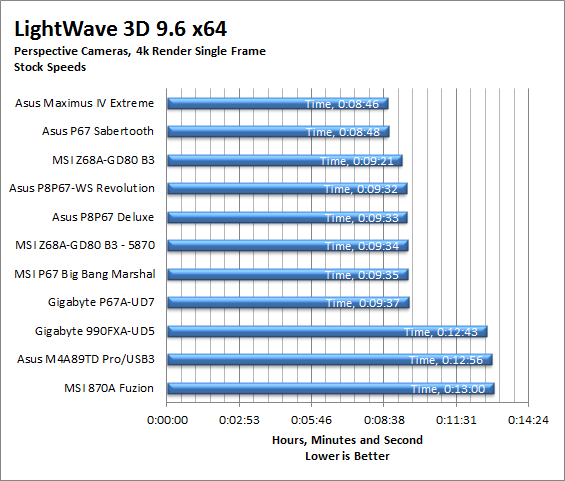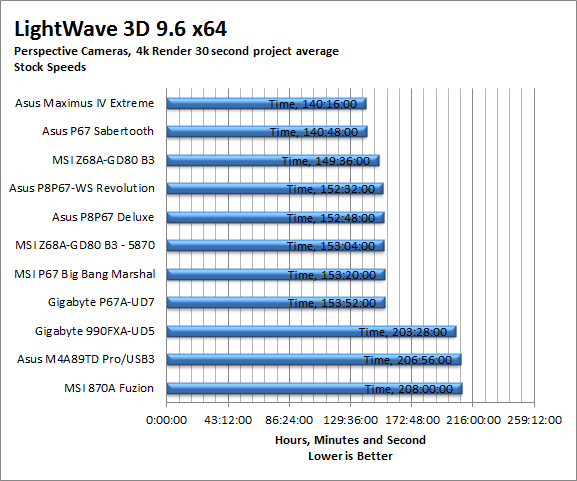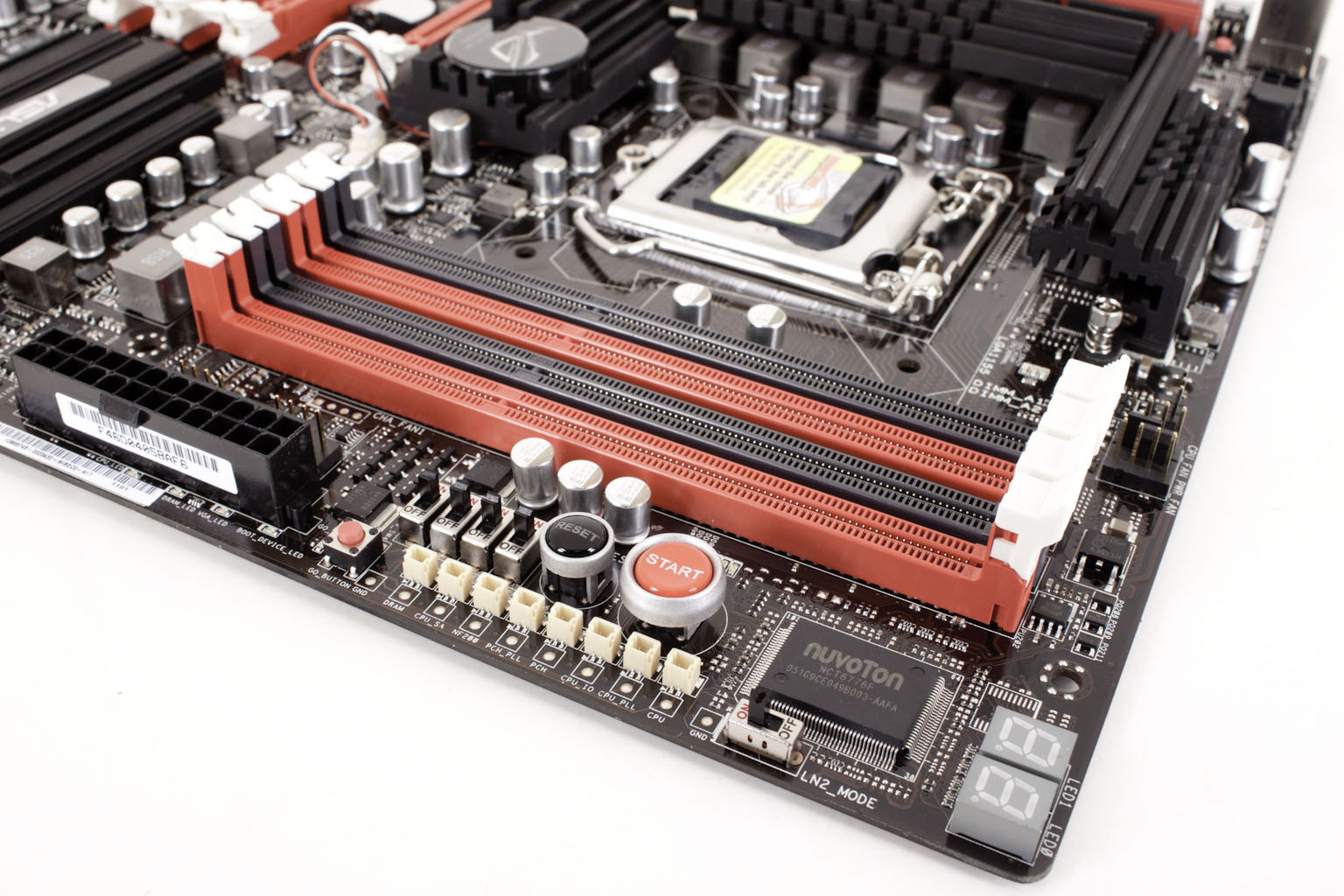Section III - Performance Tests, Real-World
Here we have two tests that are designed to put the performance of the motherboard and its subsystems to the test. Both require good CPU, Memory, HDD and even to a lesser extent audio and network performance. The two tests we chose were Lightwave 3D 9.6 and AutoGK 2.55. We will be adding at least one more real-world test to this battery in the near future, but for now these two cover quite a bit.
Lightwave 3D 9.6 x64 -
Lightwave is another industry standard application for 3D animation and rendering. It has a large tool base and the rendering engine is highly threaded (when using the right render model). This application is also capable of expanding to 4k resolutions as well as ray tracing for rending the light sources. For our testing we use frame 470 of the Pinball scene found in the LW 9 Content folder. This uses the newer perspective camera that is better suited to a multi-CPU/Core environment. This camera style also uses ray tracing and a much improved anti-aliasing method. Settings are shown below in the attached screen shot. Of course these are single frame renders and they are not a complete picture; for that you have to take into account the number of frames an average project would have. In a typical 30 second commercial you will have around 840 to 960 frames (at 28 – 32 FPS) this means that you have to multiply the time of a single frame by that number just to get a vague idea of how long that 30 seconds would take. This is because each frame will have a different render time based on complexity.
It looks like the combination of good memory and HDD performance is paying off as you can see in our Lightwave testing. The two second difference in our single 4k Frame test might not seem like much until you put it into the 30 second project estimation and that point it is becomes a 30 minute difference.
Our overclocked run on widens the gap between the MIVE and other motherboards in this group. 

CyberLink Media Espresso 6.5 -
After having various issues with AutoGK and Intel CPUs with more than four cores we have changed our Media Encoding test to use Media Espresso from CyberLink. Although this new utility does not have the same ability to transfer directly from DVD it is still a good test to transfer different media types into a usable format for your iPad, iPod, or other media player. Our test involves using multiple (Six) 20 minute media files and transcoding them for an iPad. This gives us a very good indication of how well a motherboard can handle this type of work load.
The MIVE is the first board that we are using the new Media encoder on but after multiple runs of this test we are seeing times that are just a little below what the average is for this work load. It will be interesting to see how this test works out on Intel’s new Sandy Bridge E CPUs when there is more memory bandwidth available.
Motherboards
Asus' Maximus IV Extreme Performance Leaves Us Very Impressed - Perfromance Part III
- Details
- By Sean Kalinich
- Hits: 16881
 Asus’ Maximus series has always been a great line for the user than demands top notch performance. We have tested them going all the way back to the original Maximus and each one has brought new performance features to the table. As you have seen in our feature and design review the Maximus IV Extreme is no different. We have finished putting the Maximus IV Extreme through our test suite and are ready to let you know how well it works in our lab. So sit back and relax as we walk you through the performance of the Asus Maximus IV Extreme.
Asus’ Maximus series has always been a great line for the user than demands top notch performance. We have tested them going all the way back to the original Maximus and each one has brought new performance features to the table. As you have seen in our feature and design review the Maximus IV Extreme is no different. We have finished putting the Maximus IV Extreme through our test suite and are ready to let you know how well it works in our lab. So sit back and relax as we walk you through the performance of the Asus Maximus IV Extreme.
Article Index
Page 6 of 8



